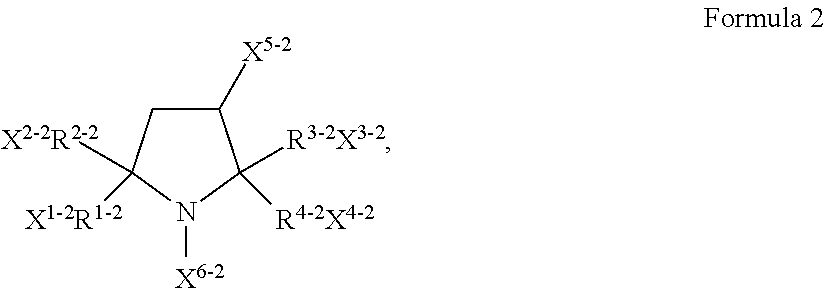Polyfunctional radical scavenger hydrogel formulation
a polyfunctional, hydrogel technology, applied in the direction of heterocyclic compound active ingredients, aerosol delivery, bandages, etc., can solve the problems of limiting the intracellular space, compromising cells, compromising wounds, etc., to prolong the protection of wounds
- Summary
- Abstract
- Description
- Claims
- Application Information
AI Technical Summary
Benefits of technology
Problems solved by technology
Method used
Image
Examples
Embodiment Construction
[0049]The polyfunctional radical scavenger hydrogel formulation generally comprises a hydrogel polymer, a first radical scavenger and a second radical scavenger. At least a portion of the first radical scavenger and / or the second radical scavenger may be dissolved, suspended and / or otherwise incorporated into the hydrogel formulation without being bonded to and / or carried on a polymer of the hydrogel. In some embodiments, at least a portion of the first radical scavenger incorporated into the hydrogel formulation and / or the second radical scavenger incorporated into the hydrogel formulation may be bonded to the hydrogel polymer and / or to a molecule other than a polymer of the hydrogel. In some embodiments the hydrogel polymer and / or another molecule to which a portion of the first radical scavenger incorporated into the hydrogel formulation and a portion of the second radical scavenger incorporated into the hydrogel formulation are bonded may act as a spacer molecule.
[0050]In embodi...
PUM
| Property | Measurement | Unit |
|---|---|---|
| length | aaaaa | aaaaa |
| lipid soluble | aaaaa | aaaaa |
| molecular weight | aaaaa | aaaaa |
Abstract
Description
Claims
Application Information
 Login to View More
Login to View More - R&D
- Intellectual Property
- Life Sciences
- Materials
- Tech Scout
- Unparalleled Data Quality
- Higher Quality Content
- 60% Fewer Hallucinations
Browse by: Latest US Patents, China's latest patents, Technical Efficacy Thesaurus, Application Domain, Technology Topic, Popular Technical Reports.
© 2025 PatSnap. All rights reserved.Legal|Privacy policy|Modern Slavery Act Transparency Statement|Sitemap|About US| Contact US: help@patsnap.com



